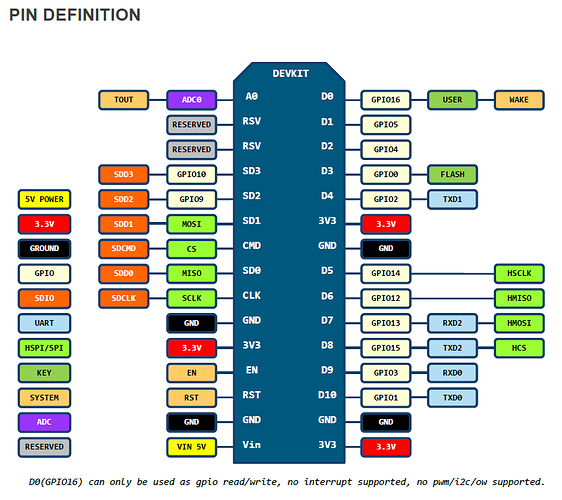Hello everbody,
I already used the following code with USB connection to my arduino board. Now I am triieng the same code with an ESP8266 Standalone. The problem is it doesnt work out, I am not able to send or receive data from/to the blink app.
The Value from the sliders are not shown in the Value Displays as they used to be.
Thank you for your help.
#define BLYNK_PRINT Serial
#include <ESP8266WiFi.h>
#include <BlynkSimpleEsp8266.h>
SimpleTimer timer;
// You should get Auth Token in the Blynk App.
// Go to the Project Settings (nut icon).
char auth[] = "0d71XXXXXXXXXXXXXXXX0176";
// Your WiFi credentials.
// Set password to "" for open networks.
char ssid[] = "FRXXXXXXXXXXXXXXXX90";
char pass[] = "643xXXXXXXXXXXXXXXXX671";
int Button1;
int Slider1;
int Slider2;
int Slider4;
int Display = Slider1 + Slider2 + Slider4;
void setup()
{
Serial.begin(9600);
Blynk.begin(auth, ssid, pass);
Blynk.syncVirtual(V1);
Blynk.syncVirtual(V2);
Blynk.syncVirtual(V9);
Blynk.syncVirtual(V6);
pinMode(0,OUTPUT);
pinMode(1,OUTPUT);
pinMode(6,OUTPUT);
}
void loop()
{
Blynk.run();
timer.run();
}
BLYNK_WRITE(V1) //Slider1
{
Slider1 = param.asInt();
Display = Slider1 + Slider2 + Slider4;
//if(Slider2 != 0){ // just a hack for initial boot when 2nd slider doesn't yet have a value
Blynk.virtualWrite(V3, Display);
Blynk.virtualWrite(V5, Slider1);
//}
}
BLYNK_WRITE(V2) { //Slider2
Slider2 = param.asInt();
Display = Slider1 + Slider2 + Slider4;
Blynk.virtualWrite(V4, Slider2);
Blynk.virtualWrite(V3, Display);
}
BLYNK_WRITE(V9) { //Slider4
Slider4 = param.asInt();
Display = Slider1 + Slider2 + Slider4;
Blynk.virtualWrite(V10, Slider4);
Blynk.virtualWrite(V3, Display);
}
BLYNK_WRITE(V6) {
Button1 = param.asInt();
if (Button1 ==1 && Display <= 225 ){
digitalWrite(0, HIGH);
timer.setTimeout(Slider1/8.7*1000, ACTIONOFF1);
digitalWrite(1, HIGH);
timer.setTimeout(Slider2/5.4*1000, ACTIONOFF2);
digitalWrite(6, HIGH);
timer.setTimeout(Slider4/8.7*1000, ACTIONOFF4);
}}
void ACTIONOFF1()
{
digitalWrite(0, LOW);
Blynk.virtualWrite(V6,0);
}
void ACTIONOFF2()
{
digitalWrite(1, LOW);
Blynk.virtualWrite(V6,0);
}
void ACTIONOFF4()
{
digitalWrite(6, LOW);
Blynk.virtualWrite(V6,0);
}

